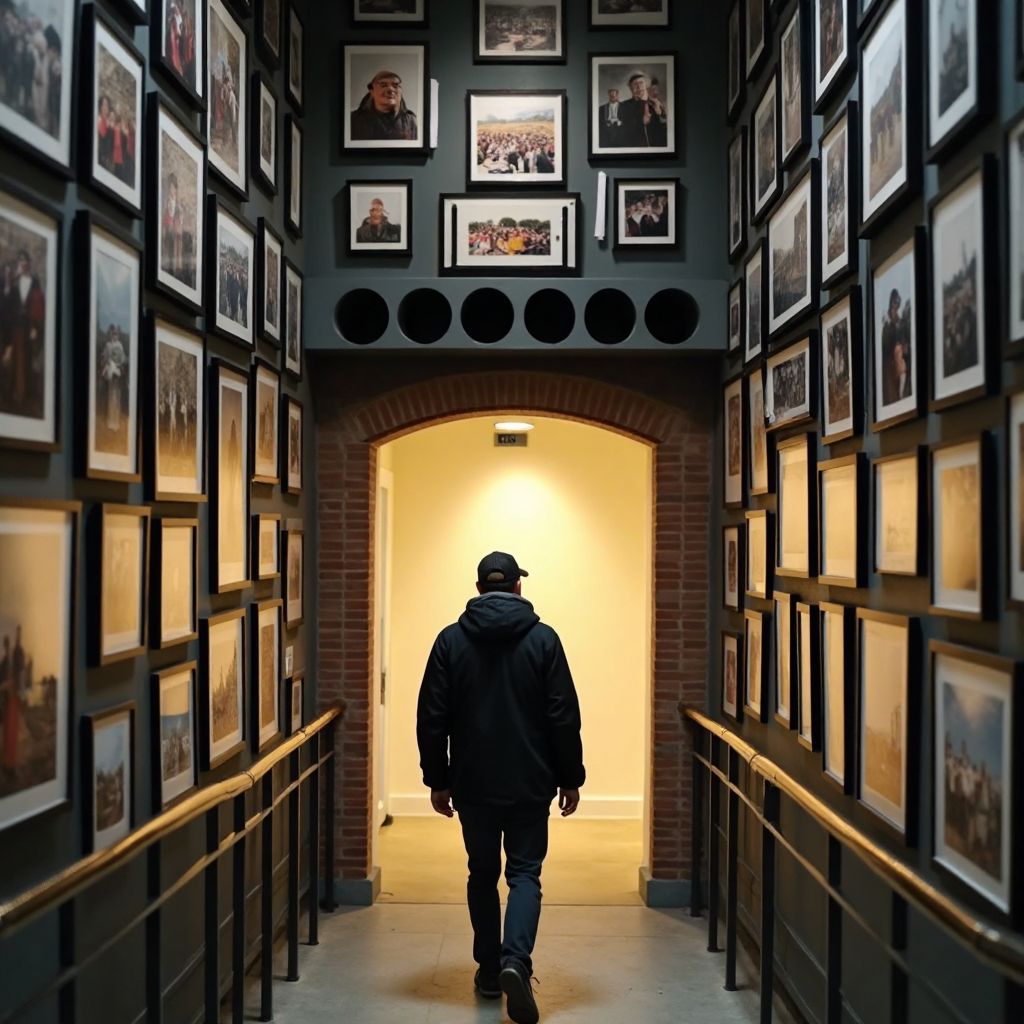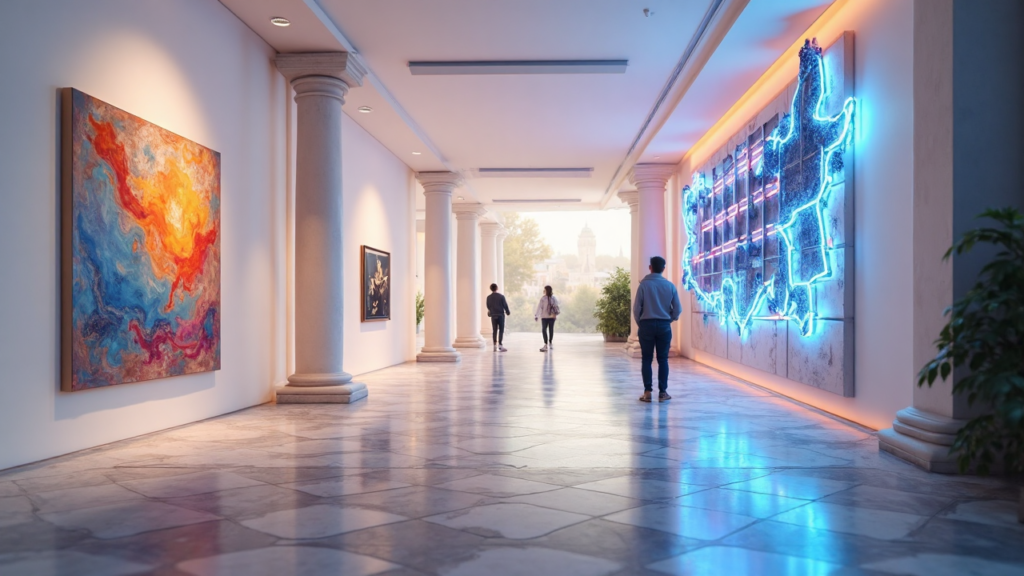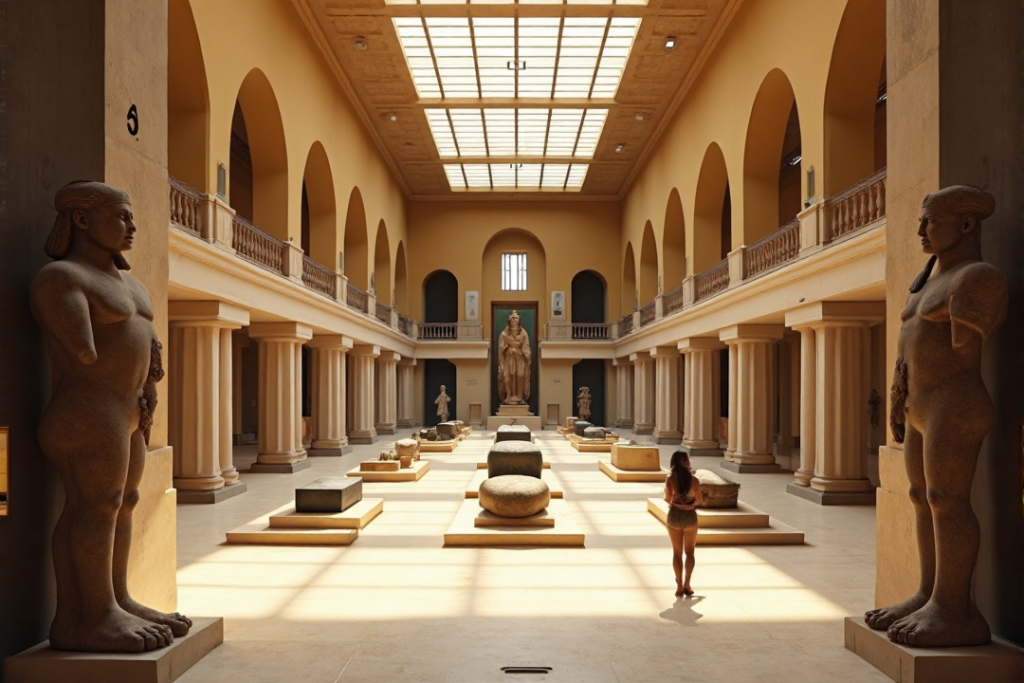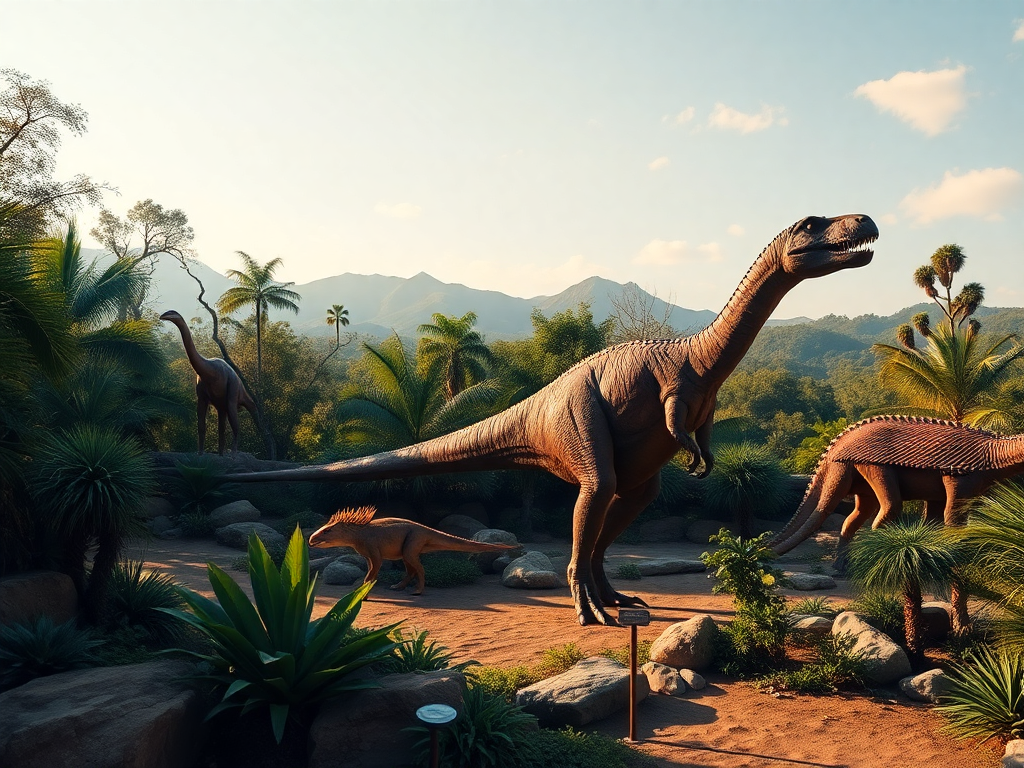In a rapidly evolving digital world, museums are no longer limited to their physical locations. Today, cultural enthusiasts from every corner of the globe can embark on enriching journeys through virtual museum tours, gaining access to some of the world’s most prestigious institutions without ever leaving home. From ancient civilizations to modern art, these immersive digital experiences have democratized learning, opened up new educational possibilities, and inspired a new generation of museum-goers. In this blog, we’ll explore the rise of online exhibits, highlight some of the most iconic virtual museums, and discover how these cutting-edge platforms have transformed our relationship with history, science, and the arts.
The Rise of Virtual Museum Tours
The concept of visiting a museum virtually has been around in experimental forms for years, but it truly gained momentum in the last decade with advancements in internet connectivity, high-resolution photography, and 360-degree imaging technology. As these technologies became more accessible and user-friendly, museums began to see the potential in reaching a broader audience. Today, institutions worldwide are creating fully immersive digital replicas of their galleries and collections.
The benefits are numerous:
- Accessibility: Virtual visits break down geographical barriers, enabling anyone, anywhere, to view priceless artifacts or famous artworks.
- Educational Enrichment: Teachers and students can explore entire exhibits from their classrooms, supplementing their curriculum with real-world artifacts and interactive experiences.
- Preservation: High-resolution images and digital scans help preserve fragile items, ensuring that even if the original artifacts deteriorate over time, their digital counterparts remain accessible for research and appreciation.
- Enhanced Engagement: Many digital tours include additional multimedia features, such as audio guides, videos, or interactive 3D models, making the learning experience richer and more engaging.
A Tour of Iconic Virtual Museum Experiences
Below, we’ll journey through some of the world’s most renowned museums, each offering its own unique online exhibit. Whether you’re passionate about history, art, or science, these virtual experiences are sure to spark your curiosity.
1. American History Museum

A part of the Smithsonian Institution in Washington, D.C., the American History Museum virtual tour opens a window onto the evolution of the United States. From the nation’s founding documents to exhibits on pop culture, this digital experience showcases artifacts that chronicle the political, social, and technological developments of America. You can explore historical icons like the Star-Spangled Banner or delve into the stories of everyday citizens who shaped the country’s narrative.
2. Hiroshima Peace Memorial Museum

For a poignant journey into one of the most significant events of the 20th century, the Hiroshima Peace Memorial Museum virtual tour offers an in-depth look at the aftermath of the atomic bombing in 1945. Visitors can learn about the city’s devastation, hear survivors’ testimonies, and understand the global call for peace and nuclear disarmament. This online experience is a powerful reminder of history’s lessons and the resilience of communities that rebuild in the face of tragedy.
3. British Museum

Located in the heart of London, the British Museum is a treasure trove of world history and culture. Its virtual reality tour showcases artifacts from ancient Egypt, Mesopotamia, Rome, and beyond. Imagine exploring the Rosetta Stone or the Parthenon sculptures up close, with the added benefit of interactive annotations that provide deeper context. By blending VR technology with expert curation, this experience transports you through centuries of global heritage.
4. Holocaust Museum Washington DC

The Holocaust Museum Washington DC virtual tour provides a solemn and profound exploration of one of history’s darkest chapters. Through survivor testimonies, historical documents, and vivid photographs, visitors gain insight into the atrocities committed against Jewish people and other marginalized groups during World War II. This digital exhibit underscores the importance of remembering the past to prevent future acts of hatred and discrimination.
5. Louvre Museum

Paris’s iconic Louvre is famous for housing the Mona Lisa, the Venus de Milo, and countless other masterpieces. This virtual tour collaboration offers a detailed look at the museum’s grand halls and exhibitions. Thanks to high-resolution imagery, you can zoom in on every brushstroke of iconic paintings and explore the palace’s intricate architectural details. Virtual visitors can navigate wings dedicated to Egyptian antiquities, Greek sculptures, and Renaissance art, all with a few clicks.
6. Metropolitan Museum of Art

New York City’s Metropolitan Museum of Art (the Met) is one of the largest art museums in the world. Its virtual tour lets you explore thousands of works spanning 5,000 years of history, from ancient Egyptian temples to contemporary American paintings. With multimedia guides and rotating online exhibits, you can revisit the Met’s vast collections time and again, always discovering something new.
7. Pergamon Museum

Berlin’s Pergamon Museum houses monumental structures like the Pergamon Altar, the Market Gate of Miletus, and the Ishtar Gate of Babylon. Its virtual tour provides a near life-sized experience of these ancient wonders. This immersive online visit lets you appreciate the scale and artistry of these archaeological treasures, making it feel as if you’re stepping back into ancient civilizations.
8. Smithsonian American Art Museum

Another jewel in the Smithsonian’s crown, the Smithsonian American Art Museum virtual tour highlights the breadth of American creativity. From colonial portraiture to contemporary digital media, the collection reflects the nation’s evolving artistic identity. Interactive features guide visitors through significant art movements, notable artists, and the cultural contexts behind each piece.
9. Dallas Museum of Art

For a taste of Texan artistry and global works, the Dallas Museum of Art virtual tour offers a diverse range of exhibits, including European art, modern and contemporary pieces, and artifacts from the Americas, Africa, and Asia. The museum’s user-friendly digital interface allows you to move from one gallery to another seamlessly, providing curated insights along the way.
10. Cairo Museum

Egypt’s capital is home to the Egyptian Museum, housing one of the most extensive collections of ancient Egyptian antiquities. The Cairo Museum virtual tour reveals iconic treasures like the golden mask of Tutankhamun, intricate papyrus manuscripts, and countless relics that date back millennia. This online journey through pharaonic history is ideal for anyone enthralled by pyramids, mummies, and the mysteries of the Nile.
11. Science Museum

Science museums around the world are taking their exhibits online, allowing visitors to engage with interactive demonstrations, planetarium shows, and cutting-edge scientific discoveries. A virtual tour of science museum experiences might include anything from robotics to space exploration, depending on the institution. By immersing yourself in these digital exhibits, you can spark your curiosity and learn about the latest advancements in technology, biology, and physics.
12. Dinosaur Museum

For paleontology enthusiasts, a dinosaur museum virtual tour offers an up-close look at massive skeletons, fossilized footprints, and scientific reconstructions of prehistoric life. Museums dedicated to dinosaurs often provide 3D models of fossils, interactive timelines showing when different species roamed the Earth, and engaging videos that bring these ancient giants back to life. It’s a thrilling way to learn about evolution and Earth’s distant past.
Benefits of Online Museum Tours
- Convenience: With just a stable internet connection, you can access some of the world’s greatest cultural treasures at your fingertips—no travel expenses, no long lines, and no crowded galleries.
- Self-Paced Exploration: Digital tours allow you to explore at your own speed. You can pause, rewind, or spend extra time on areas that pique your interest.
- Interactive Learning: Many platforms feature quizzes, clickable artifacts with detailed descriptions, and audio or video guides, making learning more engaging and fun.
- Inclusive Access: These experiences can accommodate visitors with mobility challenges or those who might not be able to travel. This inclusive approach broadens the audience for educational and cultural content.
- Archival Preservation: By digitizing collections, museums preserve their artifacts in high resolution, ensuring they remain accessible for future generations, even if the physical items face deterioration.
The Role of 360° Imaging and VR Technologies
Platforms such as virtual tour solutions have elevated the concept of museum exploration by employing 360° photography, videography, and sometimes even VR (Virtual Reality) or AR (Augmented Reality). This immersive approach gives viewers a sense of presence—almost like stepping into the museum in person. By wearing a VR headset, you can virtually “walk” through corridors, look around in every direction, and zoom in on exhibits. This not only makes the experience more engaging but also provides a deeper connection to the artifacts and artworks.
Similarly, a 360 virtual tour can replicate the feeling of physically walking through galleries, offering interactive hotspots that provide contextual information about each exhibit. High-definition visuals ensure you won’t miss the tiniest details on paintings or sculptures, enhancing both understanding and appreciation.
Virtual Museums as Educational Tools
One of the most significant impacts of digital tours has been on education. Schools and universities can now take students on online field trips to iconic museums without logistical hurdles. Teachers can design lesson plans around specific exhibits, guiding students to certain artifacts or artworks, then discussing their significance in real time. Students can interact with the exhibits at their own pace, replaying sections or diving deeper into particular topics that interest them.
Moreover, many museums offer specialized digital workshops, lectures, and webinars for students and educators. This wealth of online resources ensures that learning isn’t just passive consumption—it becomes an interactive and dynamic process, encouraging critical thinking and sparking curiosity.
Cultural Exchange and Collaboration
Digital museum tours have also paved the way for global cultural exchange. People from different backgrounds can explore each other’s histories, traditions, and artistic expressions without the usual geographic barriers. This cross-cultural engagement fosters empathy and understanding, as visitors gain insights into societies and eras far removed from their own.
Museums themselves often collaborate by sharing digital resources or co-hosting virtual events. For example, institutions in Europe might partner with those in Asia or the Americas to create joint exhibits. This international partnership enriches the global cultural landscape, providing a tapestry of diverse perspectives and experiences.
The Future of Virtual Museum Experiences
As technology advances, we can expect digital museum tours to become even more immersive and interactive. Emerging trends include:
- Live Guided Tours: Docents and experts might lead groups through galleries in real time, answering questions and providing deeper insights.
- Augmented Reality Overlays: Imagine pointing your smartphone at an ancient statue to see how it looked when originally painted, or scanning a painting to reveal hidden layers.
- Multiplayer Experiences: Visitors could explore museums with friends or classmates, chatting via voice or text as they move through exhibits together.
- Artificial Intelligence Integration: AI-driven recommendations could guide visitors to exhibits that match their interests, just like streaming platforms recommend shows or music.
Meanwhile, technology like google 360 virtual tour makes it possible to embed interactive, panoramic images directly into search results, websites, and apps. As these solutions become more refined, museums will continue expanding their reach, offering increasingly personalized and interactive journeys.
Conclusion
The world of online museum exploration has opened up boundless possibilities for education, cultural exchange, and personal enrichment. Whether you’re captivated by ancient artifacts, modern art, or the marvels of science, there’s a digital exhibit waiting for you. Institutions like the American History Museum, the Hiroshima Peace Memorial Museum, and the British Museum all demonstrate how technology can enhance our understanding of the world’s cultural and historical treasures.
Through innovative platforms that leverage a virtual museum tours approach, these online experiences have become more accessible and engaging than ever before. As we move forward, it’s likely that virtual experiences will continue to complement physical museum visits, allowing people everywhere to gain a deeper appreciation for art, history, and science. Whether you’re a student, a teacher, a history buff, or an armchair traveler, online museum tours offer an incredible opportunity to learn, explore, and be inspired by the vast tapestry of human creativity and heritage—all from the comfort of your own screen.
